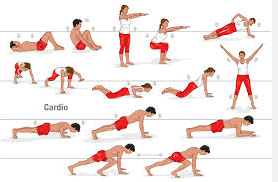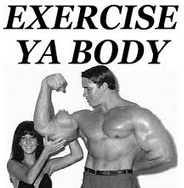When paired with a healthy diet, exercise is a crucial part of a successful weight loss regimen.
In fact, though diet is important, some experts believe that exercise is even more important when it comes to losing weight and warding off disease.
So how much should a person exercise each day? Health benefits can be achieved with 20 to 30 minutes of low-impact cardio exercise, five times a week.
But while some people exercise to lose weight, others simply want to improve their health and keep their joints flexible. Others want to get in peak condition for sports.
In short, the amount of daily exercise you need depends on what your goals are.
Exercising for health.
Experts agree that just thirty minutes of low or medium impact aerobics five times a week is all that’s needed to reduce the risk of certain diseases and promote longevity.
This can easily be obtained by going for walks after dinner, working in your garden several times a week, or riding a bicycle instead of driving your car for some of your daily errands.
If you’re new to exercise, it’s okay to start slow. Studies have shown that your body will benefit even if you have to break up the thirty minutes into smaller chunks throughout the day.
The key is to get your heart rate up to a level that will strengthen your cardiovascular system.
A good rate is 50 – 70% of your maximum heart rate. As a general rule, you can determine your maximum heart rate by subtracting your age from 220.
For example, a 40 year old would have a maximum heart rate of 180. They would get the most benefit from maintaining a heart rate of 90 – 126 while exercising.
Exercising for weight loss.
If you’re exercising to lose weight, you might have to step up your daily activity to 45 minutes or even an hour.
An example of a good weight loss routine would be 30 minutes of moderate-intensity cardio, like speed-walking or using a cross-trainer at the gym.
That would be followed by 15 – 30 minutes of strength-training. When you do strength-training, be sure to work different muscle groups each day so that each muscle group has time to recover before you push it again.
Use lower weights and more reps to develop lean, toned muscles. Use higher weights and fewer reps to build bulkier muscles.
Exercising for extreme fitness.
Some people train for two or more hours each day. These are typically experienced athletes who are already in good condition, but who want to shape their bodies into peak performance machines.
This level of training is usually done for a few months leading up to an athletic event. After the event, the athlete returns to a more normal workout routine.
Before you start an extreme fitness regimen, speak with your doctor to make sure there are no underlying health concerns that could be made worse by such a routine.
Also, extreme fitness regimens are typically a combination of cardio and strength-building exercises.
When you’re starting out, get guidance from a trainer or someone else who has experience with the program to make sure you maintain proper form and minimize the risk of injury.
Exercising for older adults.
It’s important to stay active at any age. Older adults (65+) can benefit greatly from regular exercise.
The US Department of Health & Human Services advises older adults to get 2.5 to 5 hours of moderate to vigorous exercise each week.
If health conditions make this difficult, the person should get as much exercise as possible.
Muscle-building exercises are helpful for older adults, as are exercises which improve flexibility and balance, such as yoga.


